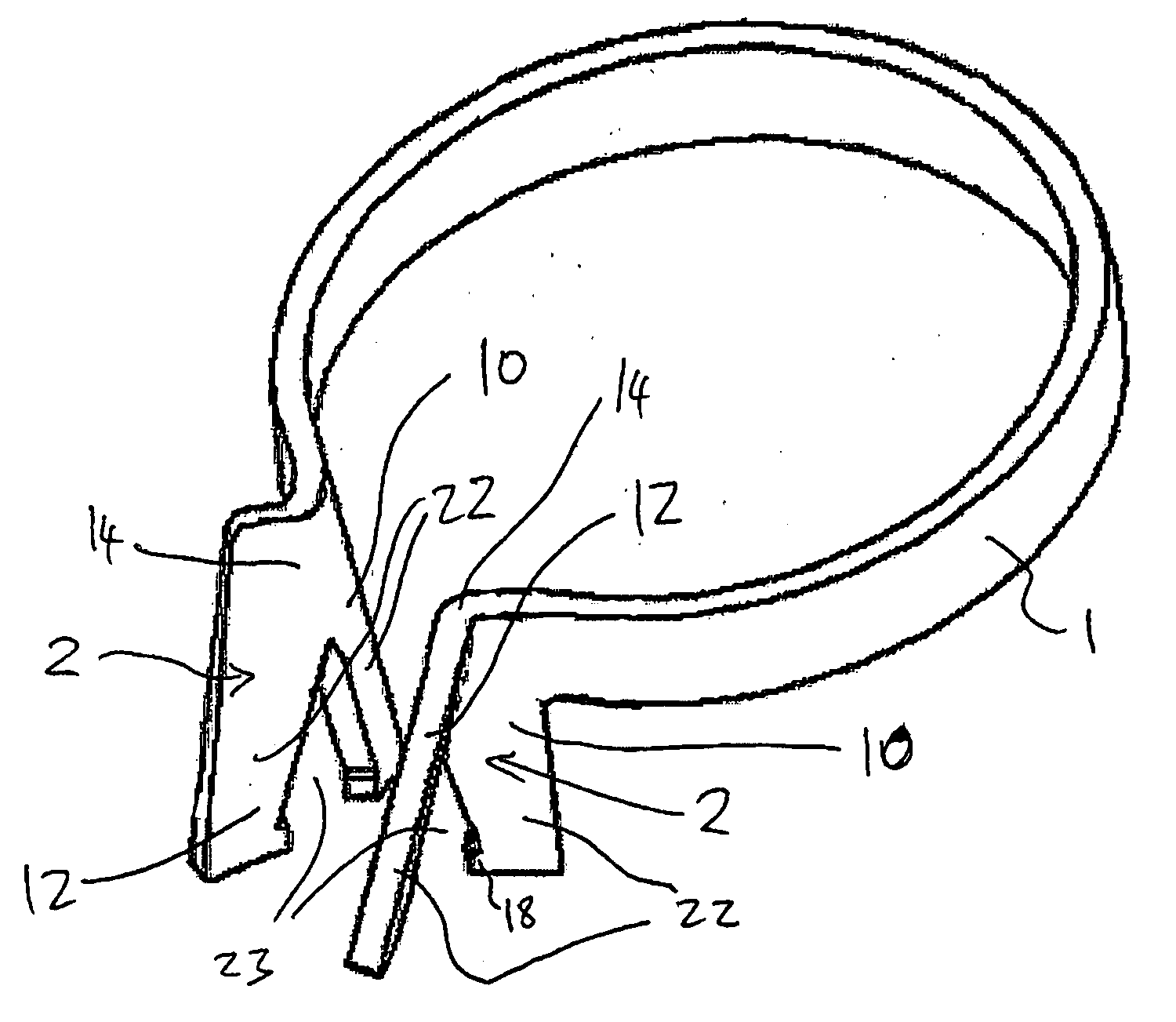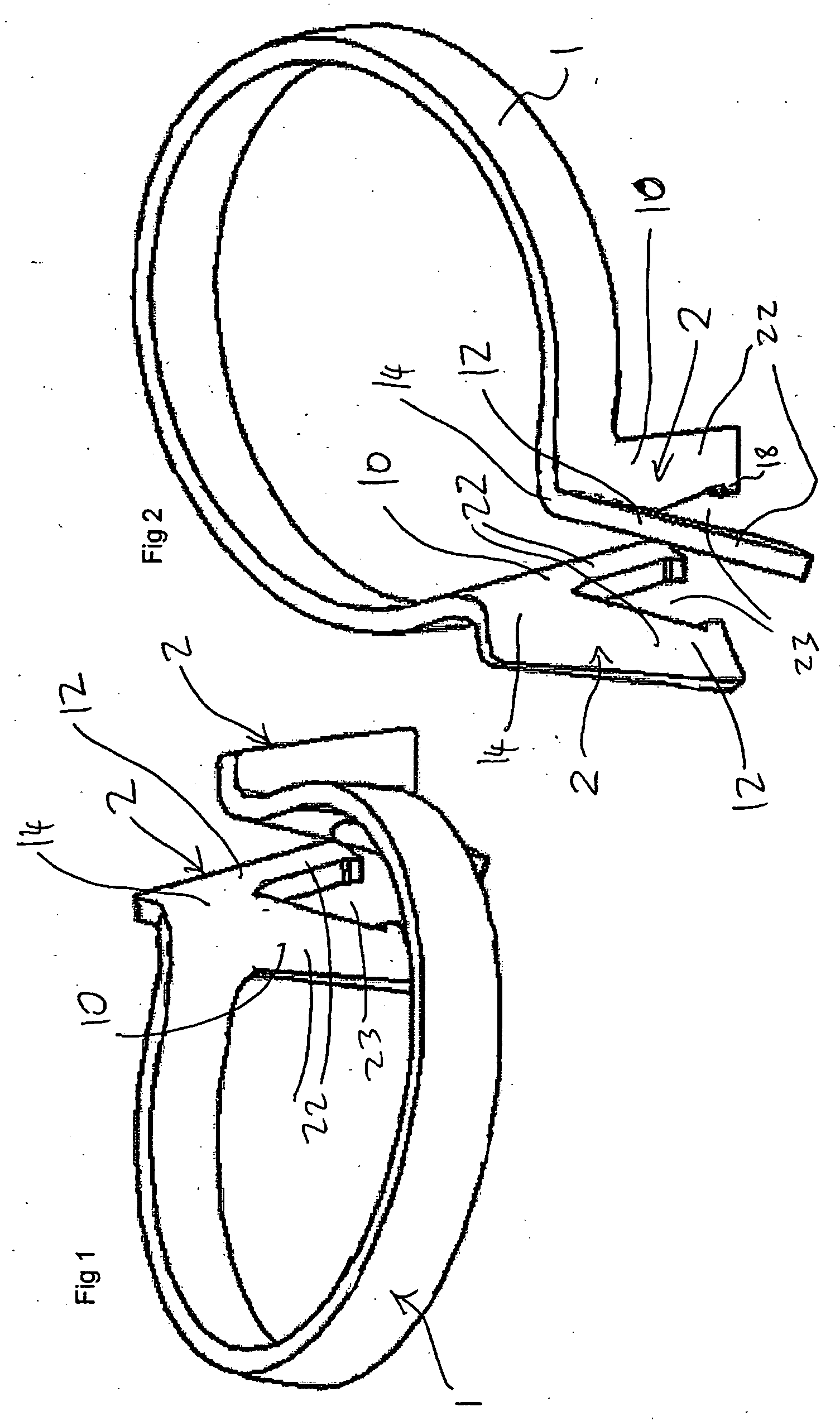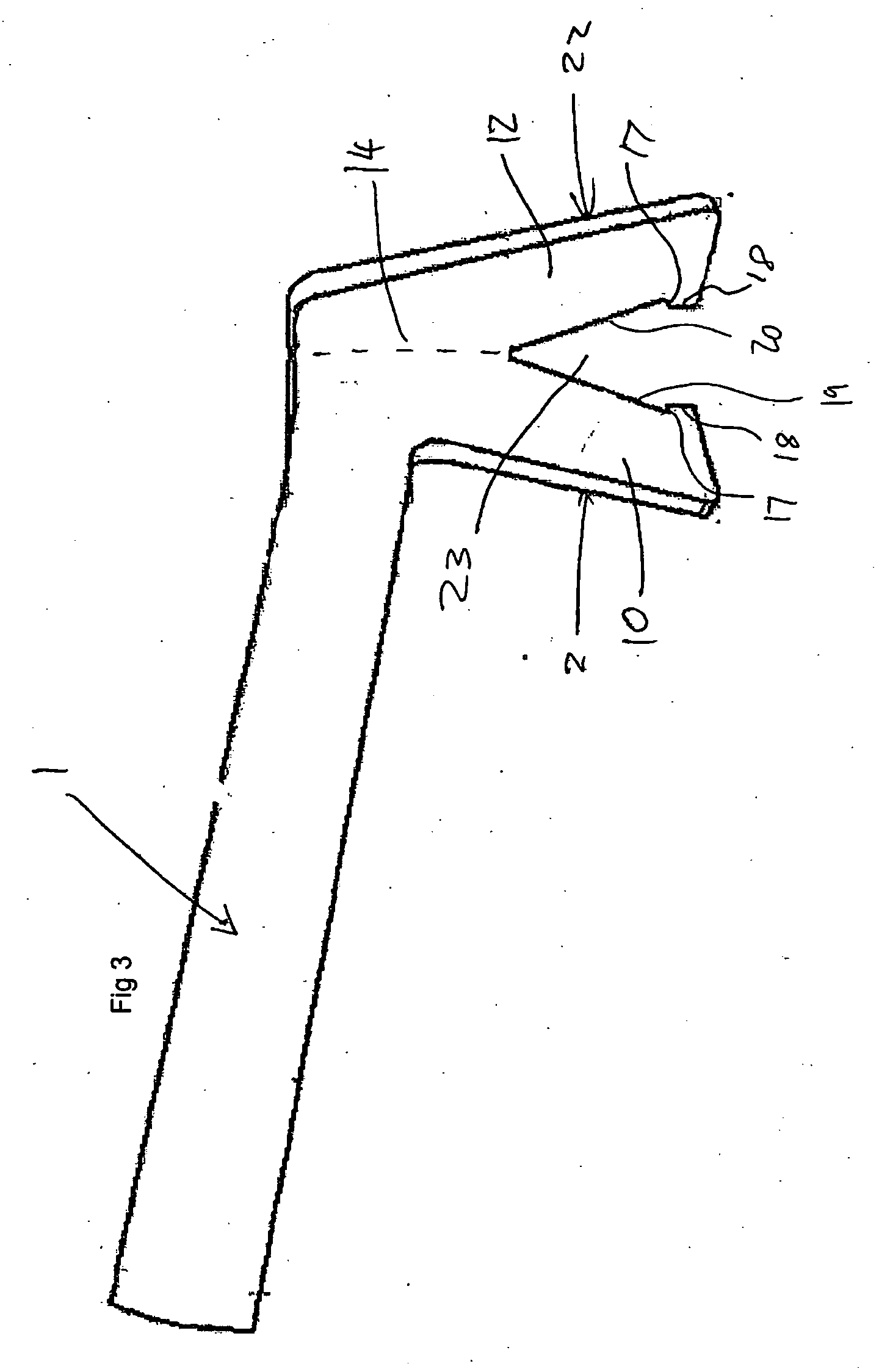Matrix band retainer
a technology of retainers and band retainers, applied in the field of matrix band retainers, can solve the problems of dislocation of the configuration of the restored tooth, dental discomfort, infection, etc., and achieve the effect of easy slipping out of position
- Summary
- Abstract
- Description
- Claims
- Application Information
AI Technical Summary
Benefits of technology
Problems solved by technology
Method used
Image
Examples
Embodiment Construction
[0031] It is an object of this invention to enable a dentist to more easily restore a proximal cavity on a tooth using a matrix band. The device according to the present invention is a matrix band retainer formed of a planar spring material with two faces on each tine. The faces transmit the force of the spring to separate the teeth while holding the sectional matrix in place. Preferably a gap between the faces of each tine facilitates the easy placement of a dental wedge.
[0032] Referring to the figures in the preferred embodiment of the present invention the matrix band retainer has a main body of an entirely unitary construction with a circular or overall horseshoe shaped spring 1 with a tine 2 at each end. The spring 1 is essentially an open ring. It does not necessarily follow a circular, oval or horseshoe path. Other curvilinear forms could be used. However a substantially circular or horseshoe ring is preferred for providing a combination of open access to the tooth biting su...
PUM
 Login to View More
Login to View More Abstract
Description
Claims
Application Information
 Login to View More
Login to View More - R&D
- Intellectual Property
- Life Sciences
- Materials
- Tech Scout
- Unparalleled Data Quality
- Higher Quality Content
- 60% Fewer Hallucinations
Browse by: Latest US Patents, China's latest patents, Technical Efficacy Thesaurus, Application Domain, Technology Topic, Popular Technical Reports.
© 2025 PatSnap. All rights reserved.Legal|Privacy policy|Modern Slavery Act Transparency Statement|Sitemap|About US| Contact US: help@patsnap.com



